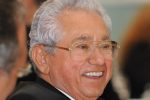3 Tactics For Training Restaurant Employees
Posted by estiator at 2 April, at 00 : 51 AM Print
By THERESA NAVARRA
The best restaurant staff training is a blended strategy. After you’ve gone through the process of hiring restaurant employees, the last thing you want to do is face employee turnover from a shoddy staff training program. But you may not have the time to develop a full restaurant staff training plan, so if we had to narrow it down, these would be the top 3 tactics to blend into your strategy, no matter how fleshed out it is.
Education
It’s important not to overlook the immediate benefit of education in the form of instruction. All of your employees will need instruction on how your restaurant operates, your menu, your ideal guest, staff processes, and how they are expected to act.
Written instruction can be useful when it comes to education. A formal training will have a system for explaining everything in the restaurant. Here are some things to include in the education:
- Restaurant facts: Cuisine type, ideal customer, average guest, busy times, most popular menu item, head chef information, owner information.
- Operations instructions: Roles and responsibilities of staff, using the restaurant POS, intersection of servers and other staff, how food is prepared, how the menu is selected, how front of house staff and BOH work together.
Demonstration
A good demonstration involves the trainer performing tasks that trainees must learn. Trainees observe proper techniques to replicate later. Here are some things you should use demonstration training for:
- Table setting
- Upselling
- Food running
- Order notes
Shadowing
Shadowing allows employees to learn from one another and for your best staff to help build up your new or underperforming staff. In the instance of onboarding new staff, this gives your new employee a chance to see the internal workings of the restaurant before having to do so on their own… exactly how they are best performed. This also allows staff to train one another, which can improve skills on both ends. You might want to have shadowing for:
- Serving tables
- Running food
- Accepting reservations
- Clearing tables
- Using the restaurant POS
Ongoing Training Tactics Not to Miss
In life, the experience is the best teacher. The difference between you as a teacher and life? You’re always giving the lessons before the test.
Even after your employees are onboarded and trained, you won’t want to forget about ongoing training. It can help improve skills, correct any issues before they become ongoing, and improve employee retention.
Here are two tactics not to forget about when implementing your ongoing training strategy.
Suggestive Selling: As your serv-ers become more familiar with your restaurant and the restaurant menu, they are easier able to suggest pairings of food and wine, upsell desserts and improve their sales (and your bottom line). Here are some ways you can help improve suggestive selling, long-term…
- Allow your employees time to become familiar with the menu
- Take the time to educate on daily specials
- Encourage the kitchen staff to discuss the menu with the waitstaff
- Suggest wine pairings weekly
- Teach your employees which menu items are most profitable
Ideal Table Service: When it comes to waiting on tables, the longer you do it, the more you learn about the best way to give attention, multi-task, and give space. However, the best servers don’t need to be on the job for 10+ years to learn this, ongoing training can teach them.
- Train your servers to read the attitudes of their tables. For example, guests who are looking around the restaurant are probably looking for their server and need something. On the flip side, guests who make minimal eye contact or continue their conversation in the server’s presence probably desires less attention.
- Educate your servers on how to talk about the menu. Many guests will rely on their server to guide them to the ideal meal. The more you can train on how to talk about the menu and pair items together, the better service your staff can give.
- Train on multitasking. Being aware of your surroundings is an important part of staff performance. Talk to your staff about how to balance multiple tables, large parties and small parties, and how to work with their teammates to meet guest needs.
Don’t forget: the restaurant industry is customer-intensive. In order to be the best they can be, your staff should be attentive to guests and also outwardly display the personality and professionalism that your restaurant expects. A good staff training program will be a 50:50 split between those two skills, mixed with knowledge of the menu and restaurant.
Related Posts
-

23 February at 11 : 27 AM 0
Grecian Delight | Kronos Foods launch integrated website
-

22 May at 13 : 55 PM 0
Θλίψη για τον θάνατο του επιχειρηματία, ευεργέτη και αγωνιστή Ευριπίδη Κόντου
















